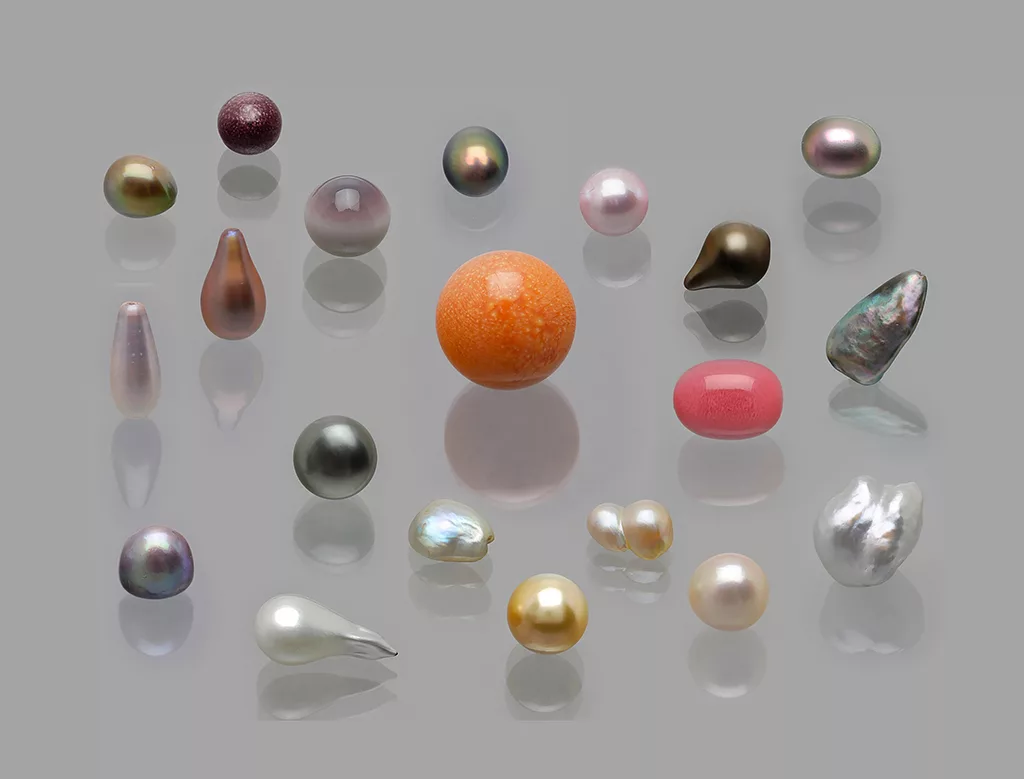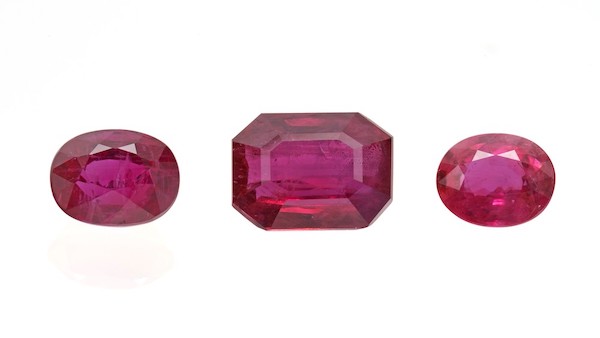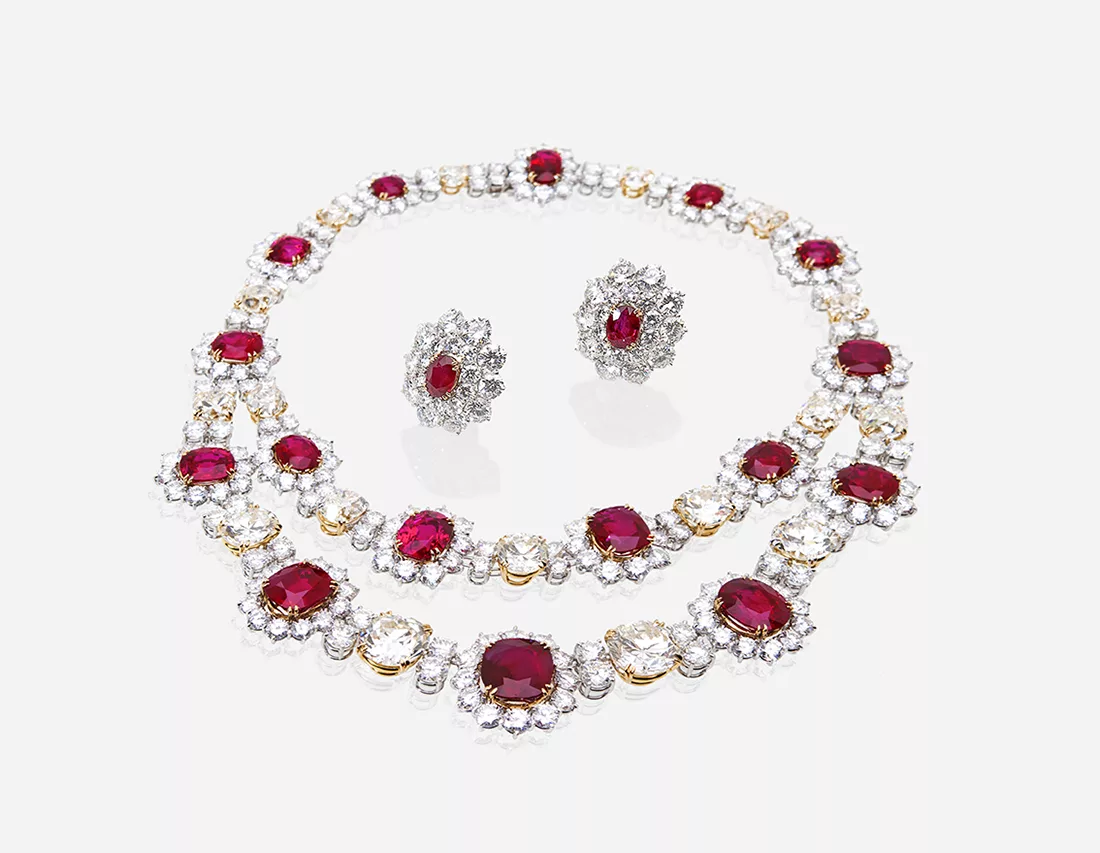
Age Dating on Ruby set in Iconic Ruby Necklace by Harry Winston
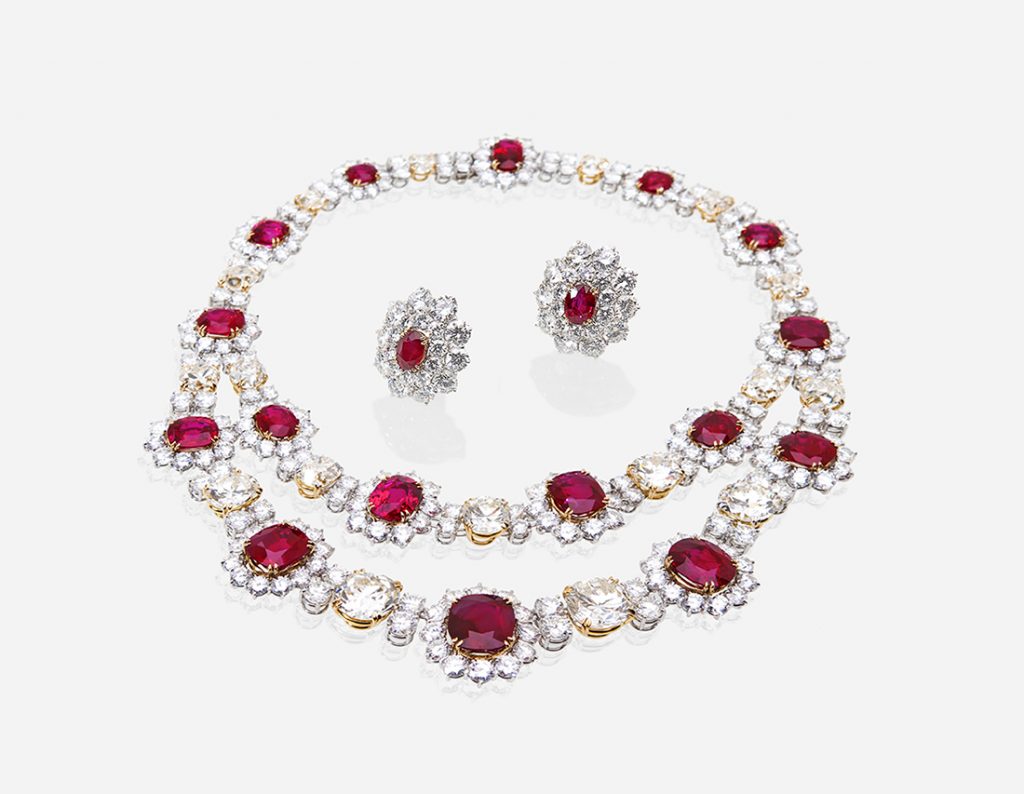
by Dr. M. S. Krzemnicki & Dr. H.A.O. Wang, first published in Facette 25 (February 2019)
Harry Winston was certainly one of the most important and influential jewellers of the 20th century. The son of a small jewellery shop owner, Mr. Winston was fascinated by gems and jewels already at a young age. His natural gift for evaluating gemstones and jewellery enabled him to follow his passion and successfully launch his own business in 1920. He was famed for his ability to recut and set gemstones of historical provenance into jewellery of a more contemporary design, thus creating a modern way to express luxury and style for his international clientele.
Many of the most important diamonds and coloured gems ever discovered went through his hands, such as the Hope diamond (44.5 ct), the Jonkers No. 1 diamond (126 ct), the sapphire of Catherine the Great (see short note in this SSEF Facette), to name just a few. Quite an important part of his exclusive jewels with coloured stones were actually analysed by SSEF in the past years.
Very recently, the SSEF had the pleasure of analysing a magnificent ruby jewellery set created by Harry Winston in the early 1980s. The set consists of an impressive necklace with 16 rubies and a pair of matching ruby ear-pendants (Figure 1). This jewellery item is pictured and described in the book “Harry Winston: the Ultimate Jeweler” by Laurence Krashes (1984, see pages 162-163).
Each and everyone of these 18 rubies were analysed as loose stones and within the setting. They range in size and weight from 2.06 ct to 17.01 ct for the central ruby of the necklace, leading to an impressive total weight of nearly 116 ct. All rubies were found to be of Burmese origin, showing internal features considered classic for rubies from the famous Mogok valley.

Apart from the normal testing procedures, we were able to identify by Raman microspectroscopy a number of small inclusions within these rubies (Figure 2), namely calcite, apatite, diaspore and titanite (also known as sphene in the trade). Especially interesting to us are those inclusion minerals, which intrinsically incorporate trace to ultratrace amounts of radioactive isotopes, such as 238uranium (238U). The radioactive isotope 238U is not stable and decays to a stable isotope of lead (206Pb) at a constant rate. Hence, by measuring the ratio of parent (uranium) and daughter (lead) isotopes using a mass spectrometer (e.g. GemTOF at SSEF), it is in principle possible for us to precisely determine the formation age of that mineral. An excellent mineral for age-dating is titanite (CaTiSiO5), which often incorporates distinct concentrations of uranium but only low amounts of lead during its formation.
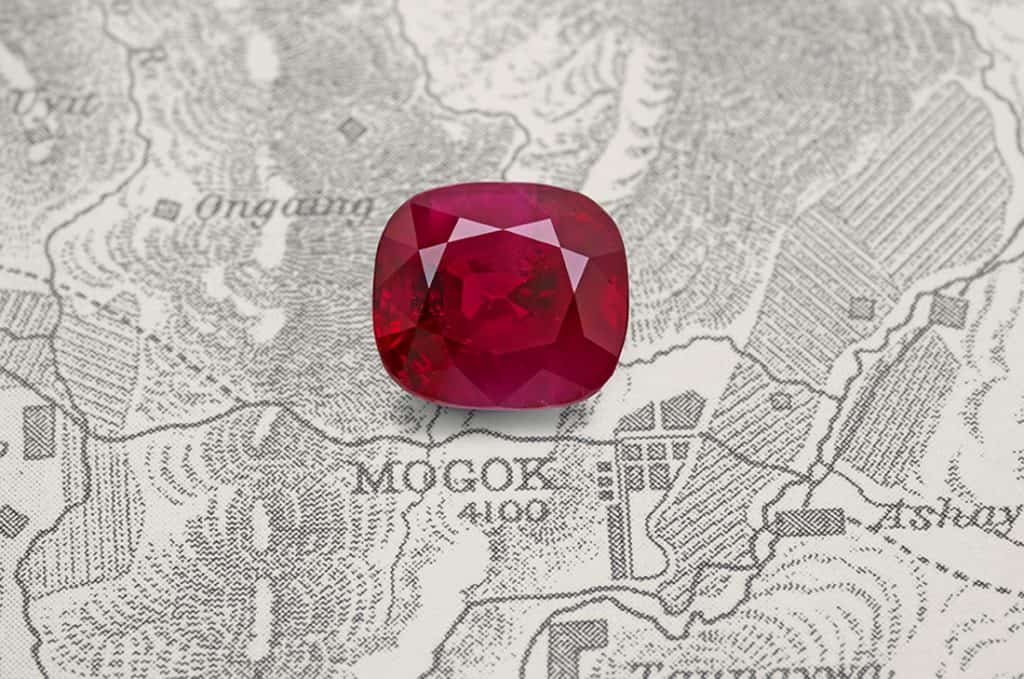
Interestingly, one of the largest rubies of this necklace (12.8 ct, Figure 3) revealed a tiny titanite inclusion exposed to the surface, hence accessible to our GemTOF laser (Figure 4). By using a laser spot size of 0.05 mm (less than half the thickness of a human hair) we were able to acquire not only radioactive pairs of isotopes, but also major-, minor-, and trace elements from almost the entire periodic table of elements. This specific feature of our time-of-flight mass spectrometer of the newest generation (GemTOF) enabled us not only to calculate the geological age of this specific titanite inclusion, but also to quantify its full range of trace elements at the same time.
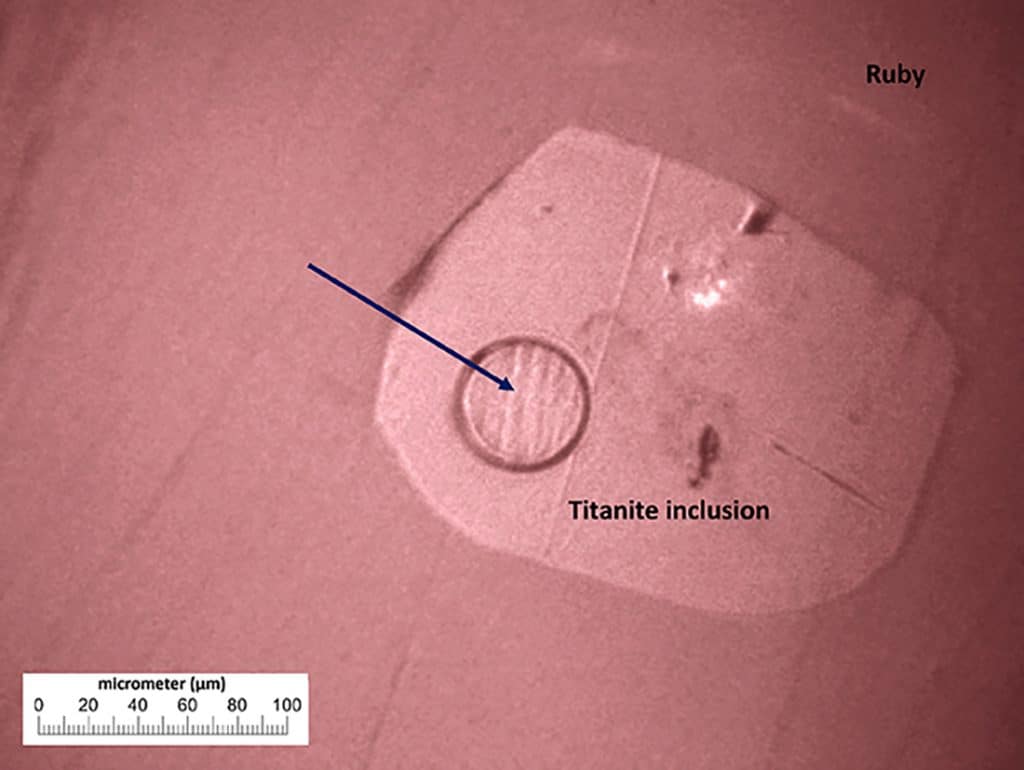
Based on our analysis, we were able to successfully calculate the formation age of the titanite inclusion to be approximately 40 million years (40 Ma +/-2 Ma). This is in good agreement with the formation age of rubies in the Mogok area (Myanmar), which formed by complex geological processes as a consequence of the collision of the Indian plate with Eurasia during the mid to late Cenozoic period (66 Ma to today). In addition, we were able to simultaneously analyze with GemTOF a large number of trace- and ultra trace elements in this titanite, such as zirconium, hafnium, tantalum, and rare earth elements, all in accordance with reference samples from the same area analysed previously by SSEF.
To conclude, age dating of inclusions in gemstones is a rather new and highly promising method, adding evidence in certain cases for origin determination. SSEF has dated in the past few months numerous inclusions (mostly zircon, but also further uranium bearing minerals such as the described titanite). These inclusions were mostly found at the surface of sapphires, rubies and spinel which were either submitted to us by our clients or which are from our SSEF research collection. To be able to carry out such cutting-edge analyses on one of the most important ruby necklaces of historic provenance is a perfect example to demonstrate the scientific progress that has been made in past years in gemstone testing, and we are proud to report with this short note the first ever documented age dating of a titanite inclusion in a gem-quality ruby.
Want to learn more about rubies?
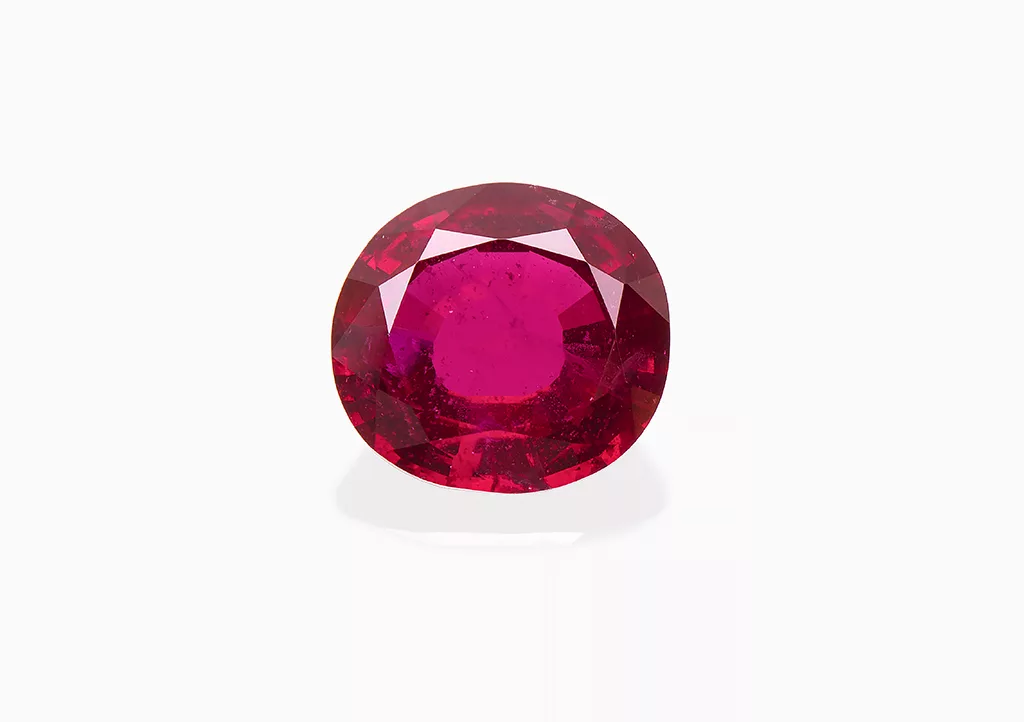
Sign up for our free online course: Introduction to rubies
